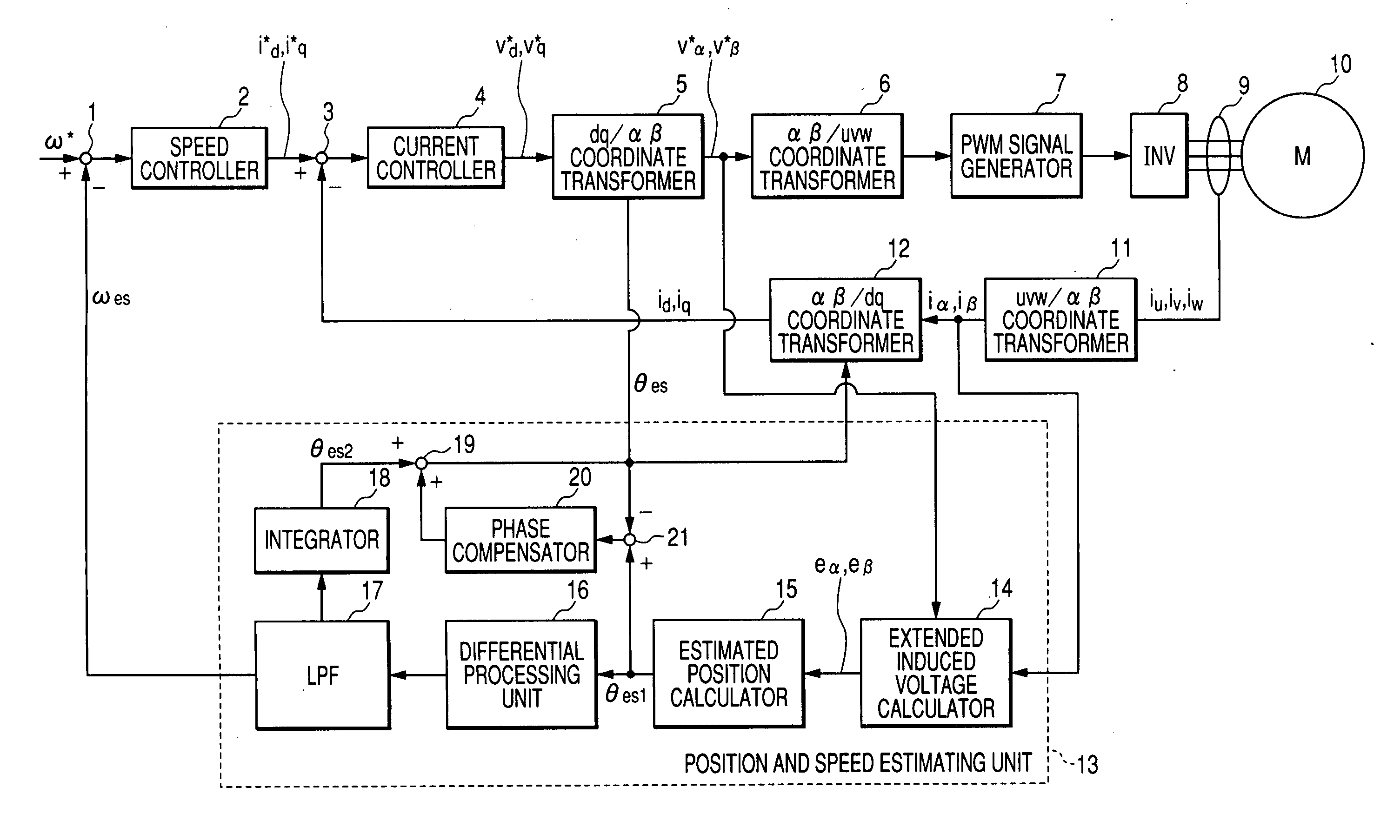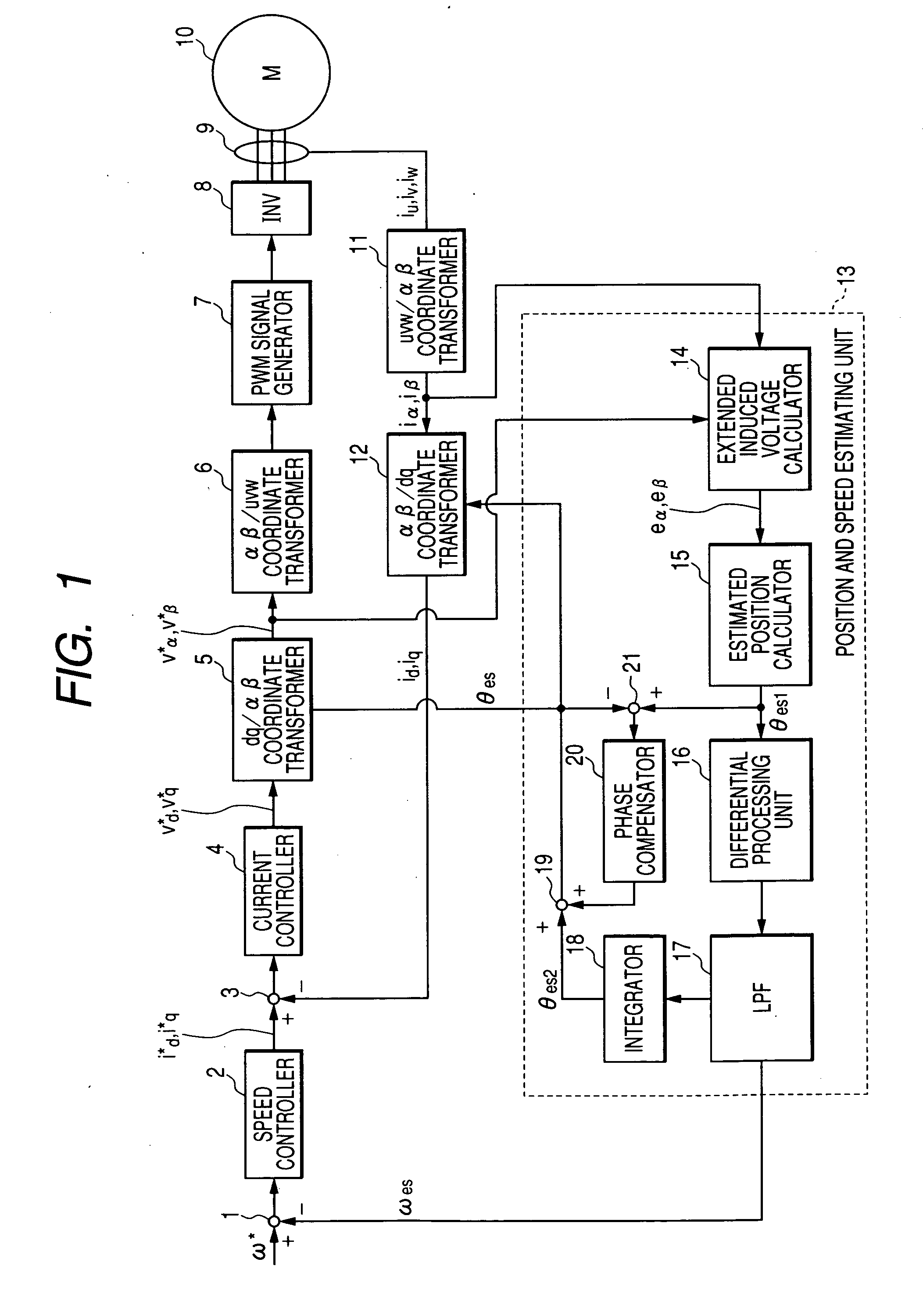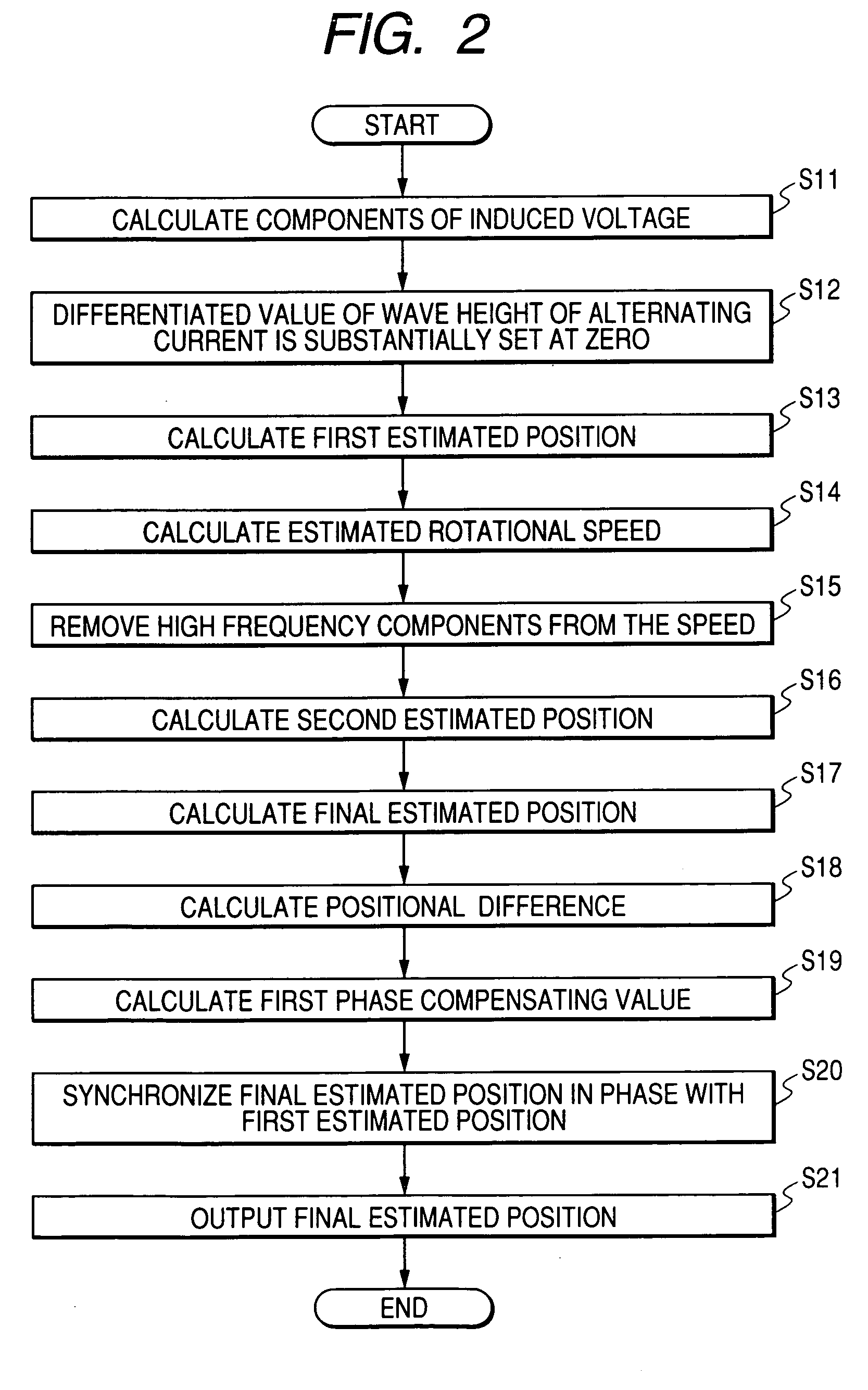Method of estimating magnetic pole position in synchronous motor
a synchronous motor and magnetic pole technology, applied in the direction of electronic commutators, motor/generator/converter stoppers, dynamo-electric converter control, etc., can solve the problems of difficult downsizing a motor with a position detector, the amount of calculation required for estimation is enormous, and the motor cannot be stably operated, etc., to achieve the effect of reducing the amount of calculation required for estimation, enhancing the accuracy of estimation, and not substantially lowering the accuracy ratio ratio ratio ratio ratio ratio ratio ratio ratio ratio ratio ratio ratio ratio ratio ratio ratio ratio ratio ratio ratio ratio ratio ratio ratio ratio ratio ratio ratio ratio ratio ratio ratio ratio ratio ratio ratio ratio ratio ratio ratio ratio ratio ratio ratio ratio ratio ratio ratio ratio ratio ratio ratio ratio ratio ratio ratio ratio ratio ratio ratio ratio ratio ratio ratio ratio ratio ratio ratio ratio ratio ratio ratio ratio ratio ratio ratio ratio ratio ratio ratio ratio ratio ratio ratio ratio ratio ratio ratio ratio ratio ratio ratio ratio ratio ratio ratio ratio ratio ratio ratio ratio ratio ratio
- Summary
- Abstract
- Description
- Claims
- Application Information
AI Technical Summary
Benefits of technology
Problems solved by technology
Method used
Image
Examples
embodiment 1
[0034]FIG. 1 is a block diagram of a control unit for a synchronous motor wherein a method according to a first embodiment of the present invention is performed. FIG. 2 is a flow chart showing the procedure of a method of estimating a magnetic pole position according to the first embodiment.
[0035] A synchronous motor 10 shown in FIG. 1 has windings of a stator and a rotor (not shown) made of permanent magnets. When a three-phase alternating current voltage is applied to the windings, a three-phase alternating current composed of phase currents of U, V and W phases flows through the windings so as to generate a changeable magnetic field due to electromagnetic induction, and the rotor having the permanent magnets is rotated on its rotation axis in response to the magnetic field. The rotational force is outputted through a transmitter such as a pulley and a belt. A phase of the current is controlled in a control unit shown in FIG. 1 to stably rotate the rotor at a desired rotational s...
embodiment 2
[0065]FIG. 4 is a flow chart showing the procedure of a method of estimating a magnetic pole position according to a second embodiment of the present invention. FIG. 5 is a block diagram of another estimating unit 24 wherein the method shown in FIG. 4 is performed.
[0066] As shown in FIG. 4 and FIG. 5, an estimating unit 24 has a phase compensating adder 22 arranged between the filter 17 and integrator 18, in place of the adder 19. The adder 22 adds a second phase compensating value outputted from the compensator 20 to the speed ωes outputted from the filter 17 to obtain a phase compensated speed ωes (step S41). The integrator 18 integrates this speed ωes with respect to time to obtain a final estimated magnetic pole position θes (step S42). The calculator 21 calculates a positional difference Δθ es (=θes1−θes) between the estimated positions θes1 and θes (step S43). The compensator 20 multiplies the difference Δθes by a second PI gain set at a value of Kp2+Ki2 / s to obtain the secon...
embodiment 3
[0071] In the first embodiment, to remove high frequency components (i.e., noises) superimposed on extended induced voltage components eα and eβ, the position θes1 expressed by an alternating current component is converted into the speed ωes expressed by a direct current component. In contrast, in the third embodiment, the voltage components eα and eβ expressed by alternating current components are directly converted into extended induced voltage components ed and eq expressed by direct current components to remove noises from the voltage components ed and eq.
[0072]FIG. 7A shows a wave shape of an extended induced voltage in the αβ coordinates system, FIG. 7B shows a wave shape of an extended induced voltage in the dq coordinates system, FIG. 7C shows a wave shape of a filtered extended induced voltage in the dq coordinates system, and FIG. 7D shows a wave shape of a filtered extended induced voltage in the αβ coordinates system. FIG. 8 is a flow chart showing the procedure of a me...
PUM
 Login to View More
Login to View More Abstract
Description
Claims
Application Information
 Login to View More
Login to View More - R&D
- Intellectual Property
- Life Sciences
- Materials
- Tech Scout
- Unparalleled Data Quality
- Higher Quality Content
- 60% Fewer Hallucinations
Browse by: Latest US Patents, China's latest patents, Technical Efficacy Thesaurus, Application Domain, Technology Topic, Popular Technical Reports.
© 2025 PatSnap. All rights reserved.Legal|Privacy policy|Modern Slavery Act Transparency Statement|Sitemap|About US| Contact US: help@patsnap.com



